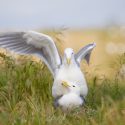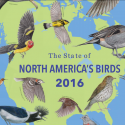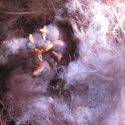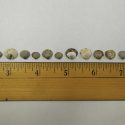 Photo ©
Keith Williams
Photo ©
Keith Williams

Share Nesting Photos to Win!
Where can you see a pile of Wood Duck babies napping in a sunbeam? Or witness the bravery of a mother Mallard risking her life to save her young? These and many other must-see moments are pouring into our annual Home Tweet Home photo contest. Who will be this year’s cutest baby? Which “eye witness” moment will win your vote? Take part in the annual photo contest by submitting your photos, and by voting for your favorites.
Photographers who enter the contest this year will get a free Lab of Ornithology wall calendar just for submitting (limit one calendar and four photo entries per person). Check back weekly to vote for your top choices in each of the four categories: (1) Cutest Baby, (2) Nests and Eggs, (3) Feeding Time, and (4) Eye Witness. The contest ends July 31, so there is still time to go out and photograph your favorite nest!

The State of North America’s Birds
The Cornell Lab of Ornithology, in collaboration with many partners throughout the United States, Canada, and Mexico, recently released a comprehensive report on the 1,154 species jointly managed by these 3 nations. The report concludes that at least one-third of all North American bird species need urgent conservation action. The report is the first-ever vulnerability assessment for all birds from the tundra to the tropical forests. Download the report to see how your region stacks up.

Nest Box Occupancy & Habitat Quality
The state motto of California is “Eureka! I have found it!” Perhaps that’s what a Western Bluebird thinks when it finds that perfect nest box in a good habitat. New research from the Cornell Lab of Ornithology, conducted in California’s oak woodlands, reveals that five species of cavity-nesting birds—Western Bluebird, House Wren, Oak Titmouse, Ash-throated Flycatcher, and Violet-green Swallow—divvy up the nesting habitat according to their specific vegetation preferences and, in the process, improve nesting success.
The researchers found that nest box occupancy rates were a good indicator of nesting success, which has management implications for the declining Oak Titmouse population. This work furthers our understanding of habitat preferences and the role that humans can play in the distribution of nest boxes. Read a brief summary of the research here.

These Birds Have Grit
Nest monitor Sharon Sorenson shared an interesting photo and question with us this month. She asked, “Why did a Tree Swallow nest contain 14 tiny mussel shells?”
Tree Swallows may eat mollusk shells for the grit, which helps them grind up their food in a muscular part of the stomach called the gizzard (a function performed by teeth in mammals). But many other bird species obtain grit from sand, small stones, and other similar items. So why do swallows prefer mollusk shells as a form of grit? Perhaps it is because they contain calcium and other minerals, and maybe a tasty morsel as well.
It is not well-known how swallows eliminate the grit, but given that these shells were heavily soiled when found, and parents usually carry away fecal sacs, we suppose that they must have been cast up as indigestible material.
We’ll never know all the secrets of birds, but we love trying! Keep asking puzzling questions, and we’ll answer them if we can.